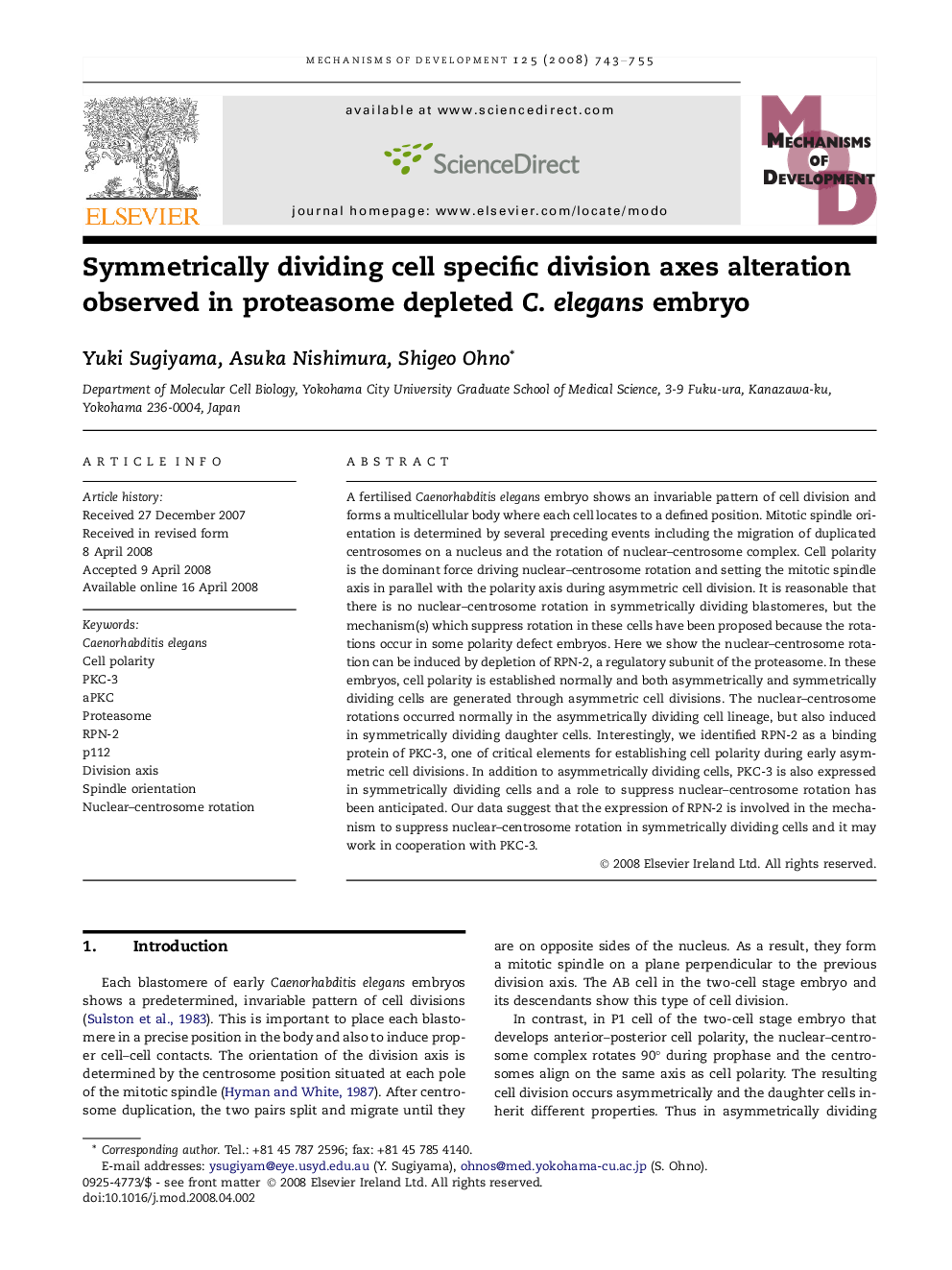| Article ID | Journal | Published Year | Pages | File Type |
|---|---|---|---|---|
| 2195357 | Mechanisms of Development | 2008 | 13 Pages |
A fertilised Caenorhabditis elegans embryo shows an invariable pattern of cell division and forms a multicellular body where each cell locates to a defined position. Mitotic spindle orientation is determined by several preceding events including the migration of duplicated centrosomes on a nucleus and the rotation of nuclear–centrosome complex. Cell polarity is the dominant force driving nuclear–centrosome rotation and setting the mitotic spindle axis in parallel with the polarity axis during asymmetric cell division. It is reasonable that there is no nuclear–centrosome rotation in symmetrically dividing blastomeres, but the mechanism(s) which suppress rotation in these cells have been proposed because the rotations occur in some polarity defect embryos. Here we show the nuclear–centrosome rotation can be induced by depletion of RPN-2, a regulatory subunit of the proteasome. In these embryos, cell polarity is established normally and both asymmetrically and symmetrically dividing cells are generated through asymmetric cell divisions. The nuclear–centrosome rotations occurred normally in the asymmetrically dividing cell lineage, but also induced in symmetrically dividing daughter cells. Interestingly, we identified RPN-2 as a binding protein of PKC-3, one of critical elements for establishing cell polarity during early asymmetric cell divisions. In addition to asymmetrically dividing cells, PKC-3 is also expressed in symmetrically dividing cells and a role to suppress nuclear–centrosome rotation has been anticipated. Our data suggest that the expression of RPN-2 is involved in the mechanism to suppress nuclear–centrosome rotation in symmetrically dividing cells and it may work in cooperation with PKC-3.
